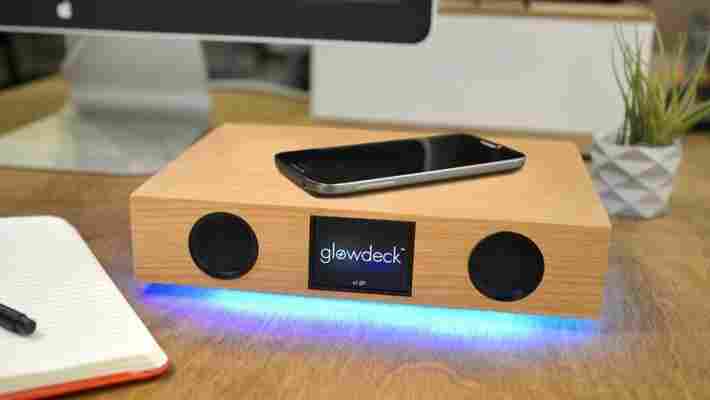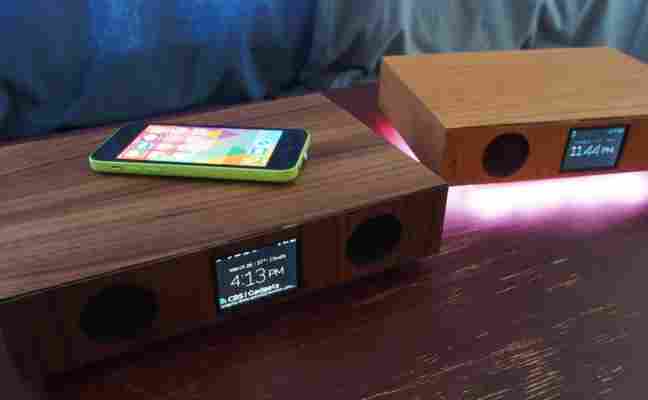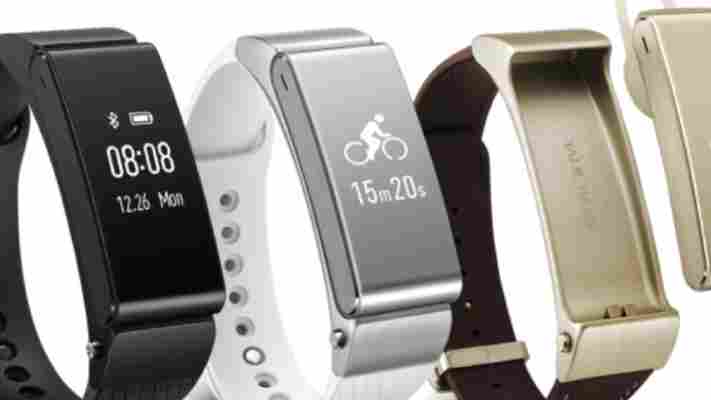Just days after the Tesla Powerwall was announced , the company has reported that it has sold out of the hot new product until mid-2016. Yowza.

Tesla CEO Elon Musk stated today in its first quarter earnings call that the company received more than 38,000 reservations for the Powerwall, which includes roughly 2,800 businesses looking to purchase the commercial version called the Powerpack.
“The response has been overwhelming. Like, crazy,” Musk said. “We’re basically sold out through the first half of next year.”
Musk himself even admitted that he thought Tesla’s latest product line would appeal more to industrial companies than individual customers. “We expect most of our stationary storage sales to be at the utility or industrial scale,” he said.
Last week, Tesla unveiled two versions of the Powerwall – a 10kWh configuration that’s optimized for use as a backup system and a 7kWh designed for daily cycling. These devices go for $3,500 and $3,000 , respectively.
If you’re still itching to drop serious cash to own a Tesla, however, you can try to get your hands on a used Model S vehicle instead – provided you live in one of the major American cities the program services.
➤ Tesla via Engadget
Read next: Now you can buy a pre-owned Tesla Model S from the company’s new online marketplace
Hands-on with Glowdeck, a beautiful 3-in-1 wireless charger, speaker and notification center
Notification centers, Bluetooth speakers, and wireless charging docks are nothing new – but the concepts find a common place in the Glowdeck , a Kickstarter project that combines all three functionalities in one package – and a single price tag.

Until now, we’ve seen these three types of gadgets designed for various consumer types. The Quirky Nimbus clock is a cute tool for data nerds, the Jawbone Jambox (and other iterations of sleek wireless speakers) target the design-obsessed, and inductive chargers like the Duracell Powermat want to help do away with cable wires.
The problem? To own all these devices, you’re looking to spend at least $150 per set.
And that’s the problem Glowdeck creator Justin Kaufman was hoping to solve when he designed the multipurpose Glowdeck. “I wanted something that did all of the above, but also did it well,” he told The Next Web.
The Glowdeck is a wood-based box that packs in speakers, microphone, wireless charging copper coils, LED display and lights, USB port, and Wi-Fi connectivity. The idea is that once you have the Glowdeck connected to your local network, you can receive all your phone’s notifications without ever touching the phone while it’s charging.
Because you can pair your smartphone to the Glowdeck via Bluetooth 4.0, the device can read the phone’s battery percentage to stop charging once it reaches 100 percent. Should the battery level drop (say, while you are sleeping overnight), it will recognize when the charge depletes and begin juicing up again.


“This method allows us to preserve the battery life of your phone, unlike most chargers out there that keep adding charge as long as the device is plugged in,” Kaufman explains.
Once paired, the Glowdeck can notify via colored lights or sound to denote new text messages, emails, or alarms. Pressing the Glowdeck also enables voice command via Siri or Google Voice. Since the deck is equipped with a microphone, you can also use it for handsfree phone conversations.
In our hands-on testing, we tried charging with an iPhone 5c, 5s, and a Samsung Galaxy S4. Most Qi-compliant phones will wirelessly charge without any add-ons; those that do not (such as the three we tested) can easily become Qi-ready by using an adapter or specially-designed phone case.
It takes a few seconds for the Glowdeck to recognize the device on the surface before it begins charging, but once it does, it works like a charm.
On the speaker front, this thing can get pretty loud. It’s not as portable as a Jambox, but it’s a great device for playing music in a social setting without rapidly depleting your phone’s battery life. If you really want to get fancy, the Glowdeck can also sync with the music and display light shows to match the rhythm of the tunes.
Kaufman and the Glowdeck team are currently working on an accompanying app that will allow users to customize the LED display, news streams, and light notifications. Just like you could change light colors to denote different notifications with the Philips Hue smart bulbs , you can set the Glowdeck to blink in different shades.
His Kickstarter project, currently aimed at beta testers, invites developers to play with the open-source hardware to make Glowdeck a true “companion to your smartphone.” At the time of publish, the project has nearly tripled its initial goal with three more weeks to go.
You can earn the acrylic Glowdeck beta unit as a reward with a pledge of $190 , or pledge least $215 to qualify for a cherry, walnut, or maple wood versions. The product is estimated to ship in July.
Huawei launches Talkband B2 activity tracker and N1 earbud hybrid
Huawei has today announced two new wearable devices, the B2 and N1, just ahead of the start of Mobile World Congress in Barcelona.

The B2 is the successor to last year’s B1 activity tracker , and comes with upgraded functionality and 6-axis tracking. Where the original only let you track calories and steps, the B2 will recognize the type of activity (walking, running etc.) and will now track sleep.
It can also pair with more than one device at a time, and is water and dust-resistant, depending on which model you choose – the plastic strap version is IP57 rated, whereas the leather version is IP54 rated.
As with the first, the main body of the wrist-worn device can be detached and used as a regular Bluetooth (4.1) in-ear headset. There’s also now a standard microUSB port for charging.
Huawei said that the B2 is good for 5 days of use between charges on your wrist, or 12 days on standby. If you’re using it as a Bluetooth speaker, the company said you should get around 7 hours of call time.
Activity is tracked via the TalkBand app – available for Android and iOS devices – and the band itself will be available in black, silver and gold from launch.
Specific pricing wasn’t divulged, but TNW was told that it will cost between €169 and €199 (for the version that comes with 2 different straps. It’ll be available in 28 countries from the end of April.
N1
The N1 is a slightly more unusual approach to the activity and sports tracking market. Rather than wrist worn, the N1 is essentially a set of earbuds that clip together using magnets, but one that also provides additional activity tracking functionality.
While it’s aimed at the most active users – ie. people who are likely to want a set of earbuds that track activity – it doesn’t have the six-axis tracking of the B2. There is, however, an accelerometer, so you can do basic movement (steps) tracking.
The N1 is IP54 rated, so mostly dust-protected and able to withstand splashes of water, and has 4GB of storage on board for music tracks, which can either be sideloaded or synced via the app.
Huawei said that the N1’s 67mAh battery would keep it running for 3 days, or provide around 5 hours call time.
The N1 will be available in gold, metallic grey and pink. Pricing and availability hasn’t yet been confirmed.
